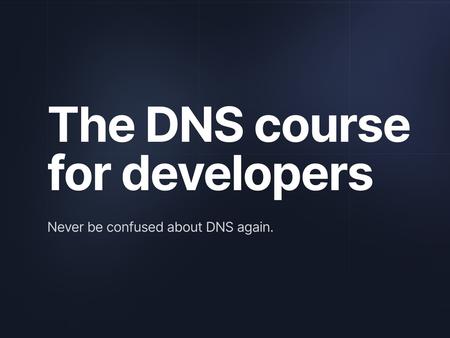English | MP4 | AVC 1920×1080 | AAC 44KHz 2ch | 46 Lessons (3h 7m) | 1.42 GB
Never be confused about DNS again.
Hi! I’m Ruurtjan Pul, a full-stack developer who used to suck at DNS.
I’ve had many side projects over the years, and never completely understood why my DNS records didn’t update. Or how long to wait until they do. Worse yet, I’ve had my emails bounce because I misconfigured SPF, DKIM and DMARC.
I decided to learn DNS by making Nslookup.io, a web interface for DNS. I’ve read the RFCs to implement a custom DNS client and I now run my own DNS server. Nslookup has become popular enough to replace my income, so I’m working on it full-time since early 2022.
Now that I’ve spent so much time learning DNS, I’m sharing everything I’ve learned in this comprehensive video course. It will teach you to reason about DNS from first principles and guard you against the mistakes I made. When you finish this course, you will be able to manage and debug DNS with confidence.
Learn DNS once and for all.
They say you should learn the fundamentals, and the rest will fall into place. DNS is right at the foundation of the internet. Having a clear understanding of DNS will help you configure and debug DNS many times throughout your career.
DNS hasn’t changed that much since its introduction in 1983 and it’s unlikely to start now. DNS isn’t going anywhere. The earlier you learn DNS, the longer you’ll benefit.
The great thing about DNS is that all the information is public. You can have perfect clarity if you know where to look.
Table of Contents
1 DNS is a database
2 The DNS is organized as a tree
3 Zone delegation
4 The root zone
5 Authoritative DNS servers
6 Zone transfer
7 Top-level domains
8 Second and third-level domains
9 Registries, registrars & registrants
10 ICANN-s oversight
11 WHOIS & RDAP
12 International domain names
13 The domain name lifecycle
14 Domain transfer
15 Recursive queries
16 Glue records
17 DNS caching
18 Negative caching
19 The DNS protocol
20 EDNS
21 Transport protocols
22 Public DNS resolvers
23 DDNS
24 Dynamic DNS responses
25 An overview of DNS record types
26 An overview of DNS record types
27 CNAME records
28 TXT records
29 SRV records
30 PTR records
31 DNSSEC-related record types
32 An overview of email configuration
33 Receiving email Resources and references
34 DANE Resources and references
35 MTA-STS Resources and references
36 SPF Resources and references
37 DKIM Resources and references
38 DMARC Resources and references
39 BIMI Resources and references
40 Cache invalidation
41 DNSSEC issues
42 Graceful DNS changes
43 Identifying root causes Resources and references
44 Inspecting DNS traffic Resources and references
45 Lame delegation Resources and references
46 Simulate slow or failing DNS
Resolve the captcha to access the links!
